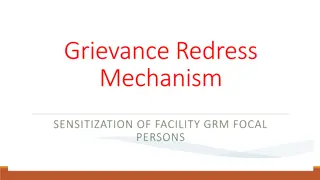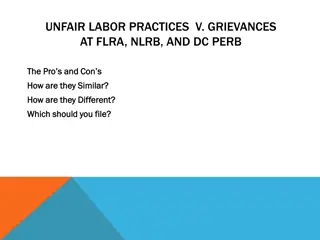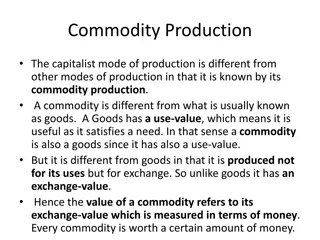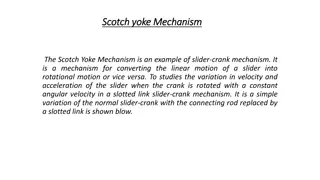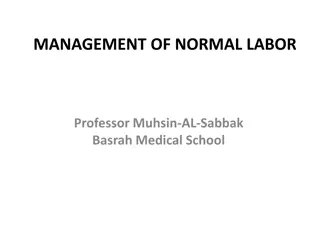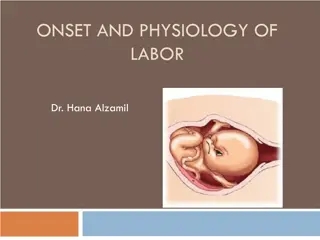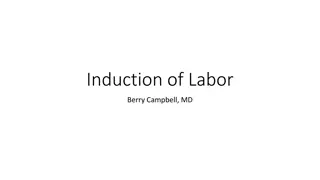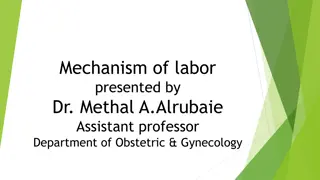
Mechanism of Normal Labor
Learn about the series of events that occur during normal labor, including triggers, requirements, and factors influencing a successful outcome. Explore the role of the uterus, maternal pelvis, and fetus in the birthing process.
Download Presentation

Please find below an Image/Link to download the presentation.
The content on the website is provided AS IS for your information and personal use only. It may not be sold, licensed, or shared on other websites without obtaining consent from the author. If you encounter any issues during the download, it is possible that the publisher has removed the file from their server.
You are allowed to download the files provided on this website for personal or commercial use, subject to the condition that they are used lawfully. All files are the property of their respective owners.
The content on the website is provided AS IS for your information and personal use only. It may not be sold, licensed, or shared on other websites without obtaining consent from the author.
E N D
Presentation Transcript
StudyMafia.Org Mechanism Of Labor Submitted To: Studymafia.org Studymafia.org Submitted By:
Table Contents Definition Introduction Requirements Right Movements Conclusion 2
Introduction The mechanism of normal labor is series of events that take place in the genital organ that allow the birth of a viable fetus at term; followed by expulsion of placenta and membrane from the vagina. World Health Organization defines normal labor as starting spontaneously at term (37 completed weeks of gestation) for a fetus with cephalic presentation, progressing without maternal or fetal complication, and resulting in the delivery of fetus followed by placenta and membranes. 3
Introduction The factors that trigger labor at term are not clearly understood; it is postulated that it is a result of changes in the hypothalamic pituitary adrenal axis, increasing fetal cortisol, and placental enzymatic functions. Complex interactions of hormones between uterus, placenta and fetus. Fetal dehyroepiandrosterone sulfate (DHEAS) is converted to estriol and estradiol by the placenta. This potentiates oxytocin receptors in the myometrium, reduces the progesterone/estrogen ratio and upregulates myometrial gap junctions to facilitate uterine contractions. 4
Requirement For a successful normal labor a coordinated interaction of the uterine activity (power), maternal pelvis (passage) and fetus (passenger) is required. Maternal pelvis (passage) The maternal pelvis is made of five bones (Figure 1): the sacrum and coccyx posteriorly, two innominate bones on each side, and the pubic bone anteriorly. The pelvic brim extends from the sacral promontory, along the ilium on each side circularly along the ridge divides the pelvis into upper false pelvis and lower true pelvis. The significance of the false pelvis is to support the pregnant uterus; the true pelvis is a bony passage for fetus to pass during labor. 5
Requirements Uterine activity (power) The uterine contraction is characterized by its intensity, frequency, and duration. External tocodynamometry is a qualitative measurement of uterine activity, records uterine activity and correlates fetal heart rate (FHR) pattern with uterine contraction. Quantitative assessment of intrauterine pressure to measure the strength of uterine contraction is done by placement of an intrauterine catheter. 6
Requirements Fetus (passenger) For a successful outcome, the fetal skull, shoulders, trunk and buttocks should pass through maternal pelvis. Several variables in the fetus influence its journey through the birth canal. Fetal size can be estimated by palpation, ultrasound scan and customized growth chart but all of these methods are subjected to large degree of error. Fetal lie is the relationship of the long axis of the fetus relative to longitudinal axis of the uterus. A fetus in longitudinal lie is suitable for vaginal delivery. 7
Rights Movements The fetus undertakes a series of movements to adapt the smallest possible diameter of the presenting part to the anatomy of the maternal pelvis. The commonest situation is fetus in longitudinal lie, cephalic position and well-flexed attitude. These movements are: Engagement; Descent; Flexion; Internal rotation; Restitution; External rotation; 8
Rights Movements Engagement is the mechanism by which the greatest transverse diameter of the fetal head: the biparietal diameter (BPD) (9.4 cm) is at or has passed the pelvic inlet (brim). In nulliparous women engagement occurs weeks prior to onset of labor, whereas in multiparous women it may occur in labor. Descent is a continuous process throughout the first and second stage of labor. Flexion the head is already flexed to an extent at the time of engagement and further flexion occurs during the first stage of labor due to soft tissue resistance of the pelvis. 9
Rights Movements Internal rotation is defined as turning of the head in such a manner that the occiput gradually moves anteriorly towards the symphysis pubis. This carries the long diameter of the head into the antero posterior diameter (A-P), i.e. the longest diameter of the pelvic outlet from the previous occipito lateral positions. Internal rotation brings the occiput forwards under the pubic arch. The fetal shoulder enters the pelvis in the transverse diameter. This results in degree of rotation at the fetal neck. 10
Rights Movements Extension the force of uterine contraction and active maternal effort along with the pelvic floor muscles facilitates the birth of head by extension. The chin slides over the edge of the perineum and becomes separated from the chest wall, i.e. the head becomes extended. The vaginal outlet is stretched and crowning occurs. With progressive distension of the perineum the occiput, forehead, mouth and chin are delivered successively. Restitution the visible external movement of the fetal head that corrects the torsion of neck sustained during internal rotation. The direction of movement is opposite to that of the internal rotation (45 ). 11
Rights Movements External rotation the movement of the head due to the internal rotation of the shoulder as it comes in the antero posterior diameter of the pelvic outlet. This is visible externally in a direction opposite to internal rotation. It occurs in the same direction as restitution. Now the shoulders are in antero posterior diameter (A-P) axis. The anterior shoulder escapes under the pubic arch, while the posterior shoulder sweeps over the perineum. After the delivery of the shoulders, the rest of body is delivered spontaneously by lateral flexion. 12
Conclusion Labor is a crucial time for the mother, family member and the fetus. This is the most perilous journey under taken by the fetus in utero. For the clinician it is equally important to know and identify any deviation from the normal pathway. Despite immense development in imaging techniques to assist in making the right decision for the patient nonetheless in labor management the clinical assessment still has a key role. 13
References Google.com Wikipedia.org Studymafia.org Slidespanda.com
Thanks To StudyMafia.org





